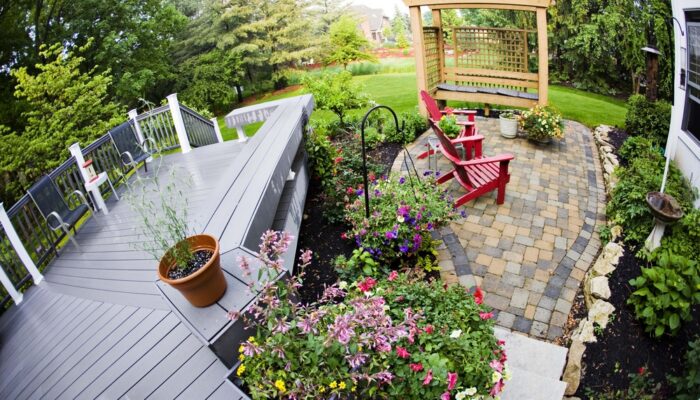4 Key Points To Know Before Setting Up Composite Decking
4 key points to know before setting up composite decking
Composite decking is one of the best and most effective ways of replacing wooden decking. It is also a low-maintenance alternative, which is an important factor. This industry has been facing a few issues with the procurement of raw materials, but it has grown over the past few years and has become common in many households.

What are the things to consider while choosing composite decking?
- Cost: Getting a composite decking for your backyard can be an expensive affair, which is why analyzing the price is essential. The basic boards start at approximately $4 per square foot, while the premium variants can go up to as much as $7.20 per square foot.
- Warranty: The warranty is often offered on the structural integrity of the boards. Most of the manufacturers will offer a 25-year or a limited-lifetime warranty. Some warranties are also transferable from one homeowner to another homeowner. The warranty only covers physical damages; the fading of the material, as well as scratches and stains, are not covered in most cases.
- Care: The care required for composite decking boards is significantly lesser than wooden boards. You do not need to polish them or spray them with pesticides to keep termites away. All they need is a simple scrub with soapy water, which makes them easier to maintain.
What contents are used to make composite decking boards?
Composite decking boards are created by mixing equal parts of wood fiber and plastic with ultraviolet inhibitors, borate preservatives, and pigments. If a board needs to be textured, it is embossed when it is warm.
- Waste wood: This is one of the base components of composite decking and is usually taken from the leftovers at mills and furniture factories.
- Recycled plastic: Composite decking boards are also made with a base of recycled plastic. This recycled plastic is obtained by shredding polyethylene milk jugs and shopping bags.
What are the pros of composite decking?
- Low maintenance : Composite decking, unlike wood, does not require bleach to get rid of the stains. Even though it might cost more than wooden decking, you will be able to recover the cost in a few years because of the low cost of maintenance.
- Long life : Composite decking is an overall package for your backyard as it does not rot, attract termites or require regular cleaning. The boards do not warp or check either, and you can roam on this decking barefoot without the fear of splinters.
- Minimal fading : The composite will turn a shade or two lighter in the initial months, but that is all the fading you will witness. As there are no harmful chemicals sprayed on it the color of the decking will be maintained, and the material’s quality will not deteriorate much.
- Recycled content : Another benefit of composite decking is its recycled nature. Every 10 square feet of a panel accounts for 3,000 recycled plastic bags and 1,100 recycled one-gallon milk jugs.
What are the cons of composite decking?
- High cost : Setting up a composite decking in your backyard might have multiple advantages, but it comes with a hefty price tag attached. Even the low-end composites are 30% costlier than pressure-treated pine.
- Stains : Grease or food can easily stain composite decking. Furthermore, the hardwood present in most of the mixes can leave uneven brown stains in the early days. These stains, however, will disappear over time.
- Heats up easily : There will be no warping or checks on the composite decking, allowing you to walk barefoot, but this will not be possible in the summers as the boards can heat up quickly. Deep-grooved boards heat up slowly and are comfortable for your bare feet.





